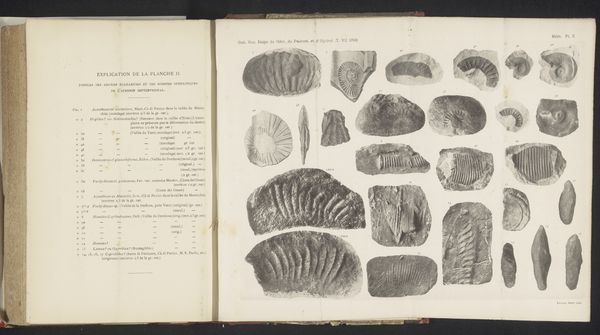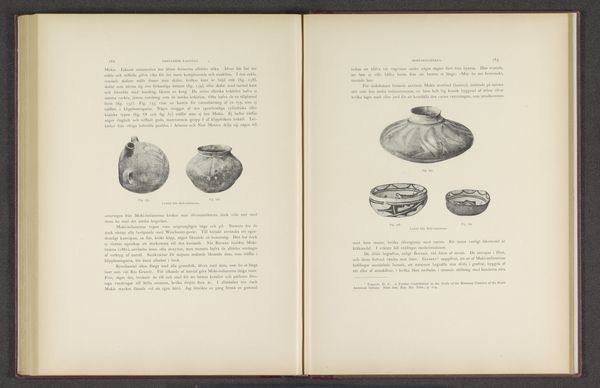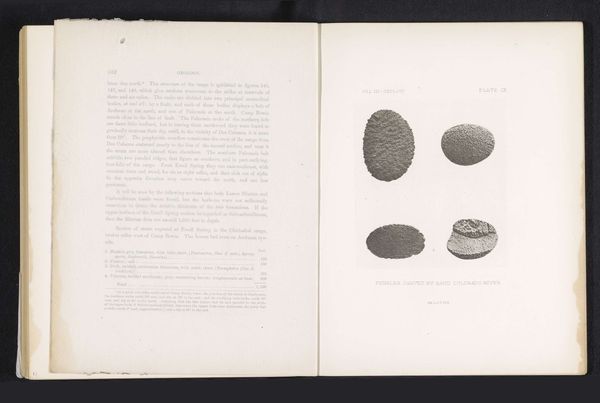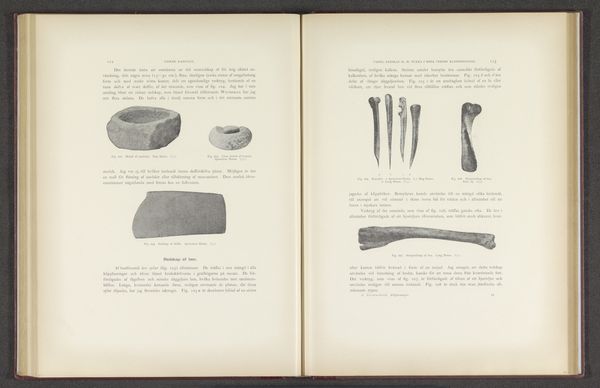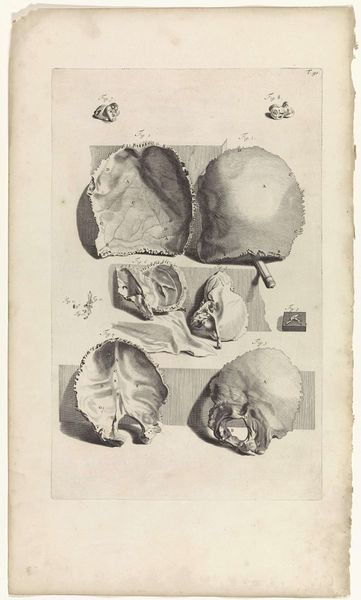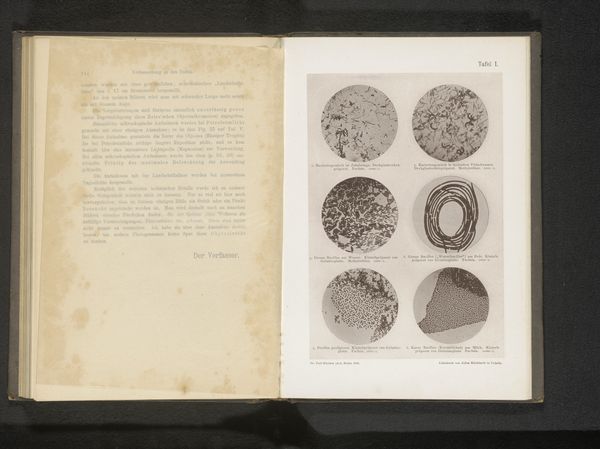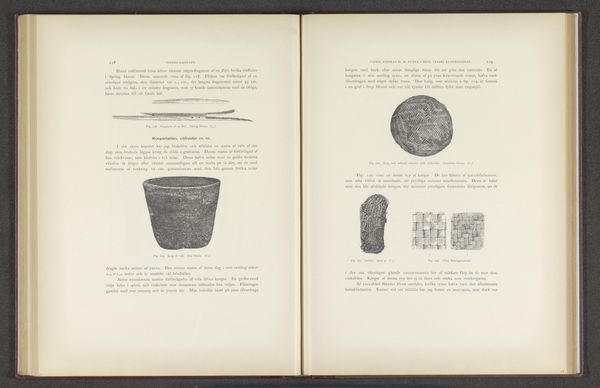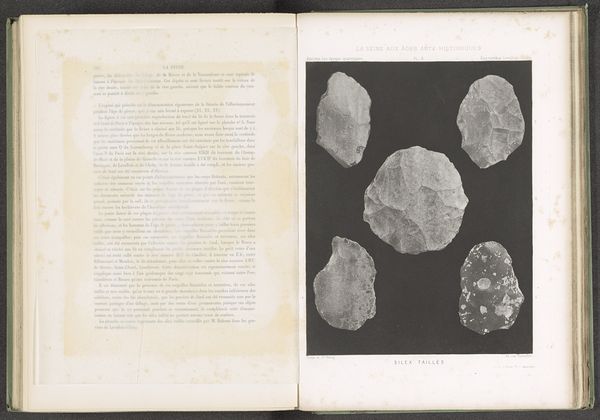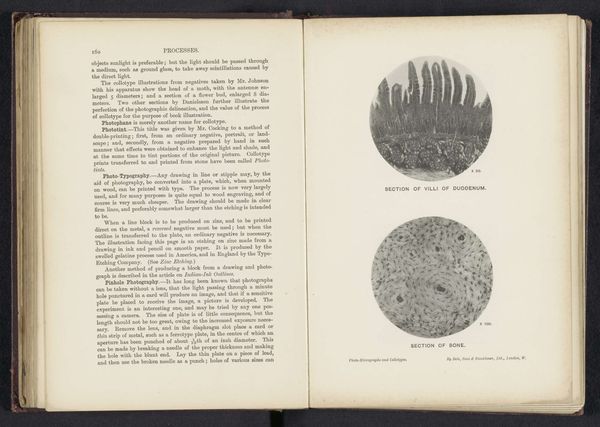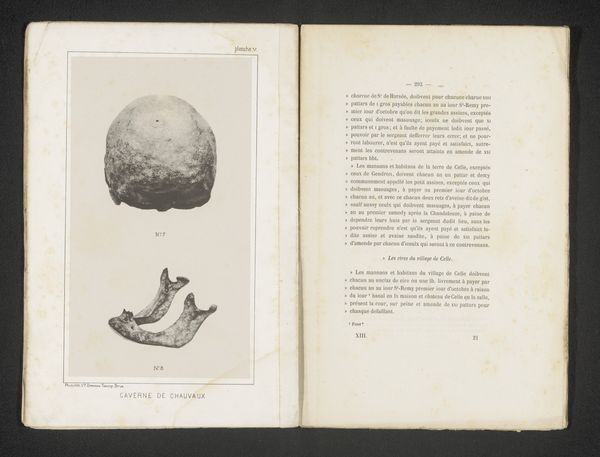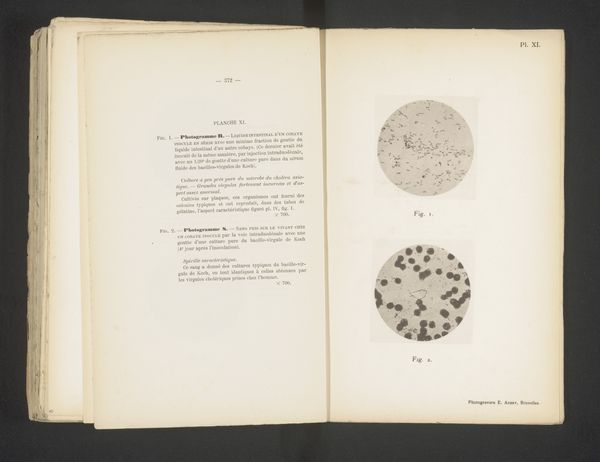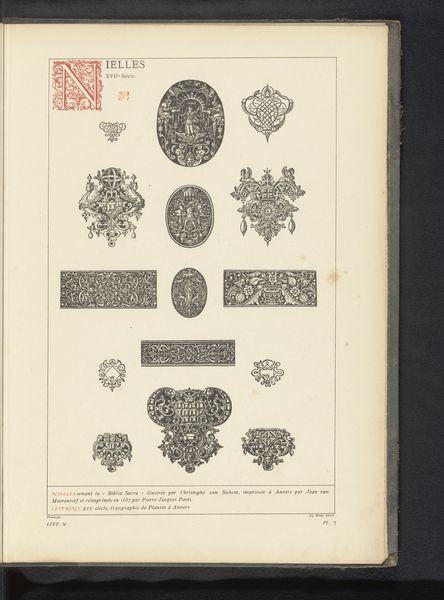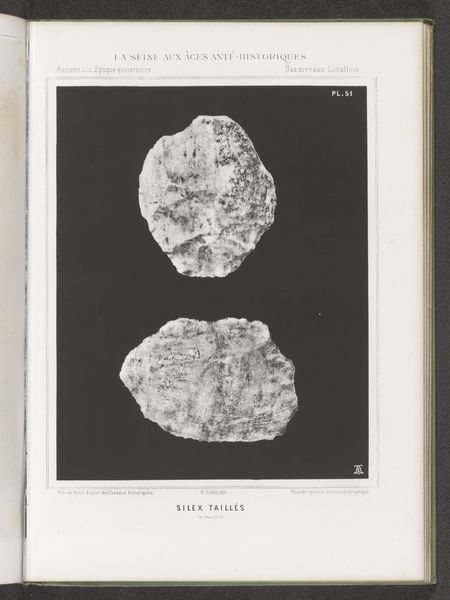
print, photography
# print
#
photography
#
academic-art
Dimensions: height 207 mm, width 268 mm
Copyright: Rijks Museum: Open Domain
Curator: We’re looking at “Verzameling van verschillende fossielen,” or "Collection of Different Fossils" by Federico Sacco, dating from before 1893. It appears to be a print from a photographic image in a book. Editor: Immediately, the textures and gradations of light and shadow really stand out. There's such a contrast between the flat page and these three-dimensional forms rendered in meticulous detail. It's almost sculptural. Curator: Indeed. The context is crucial. These images weren't meant as art in the contemporary sense but as scientific documentation. Consider Sacco’s role in 19th-century geological studies; how the emerging field of paleontology was visualized and disseminated through publications like this. What stories about environmental and social change do these fossils represent, especially considering the context of colonial resource extraction occurring simultaneously? Editor: And yet, consider how the careful arrangement and presentation transforms mere documentation. The starkness of the monochrome palette directs my eye to the intricacies of each fossil's form. Those radial patterns on some evoke growth, a kind of natural mathematics embedded within stone. I see a tension between the impulse to classify and the intrinsic mystery these shapes retain. Curator: Absolutely. It reflects a broader historical moment: the tension between scientific advancement and the unsettling reality of ecological transformation. Fossils, then, are not simply remnants of the past but active agents in a larger narrative. Editor: What is particularly interesting, is how it plays with the boundary between image and object. The fossils, even reduced to a photograph, seem to maintain an elemental presence. Curator: Right, that tension between image and objecthood highlights our present moment of ecological awareness and speaks to the ways visual representation influences public perceptions of natural history. Editor: A captivating look at geological forms with the beautiful precision only monochrome print allows. Curator: Agreed. This opens an interesting view into the dialogue between art, science, and history.
Comments
No comments
Be the first to comment and join the conversation on the ultimate creative platform.
